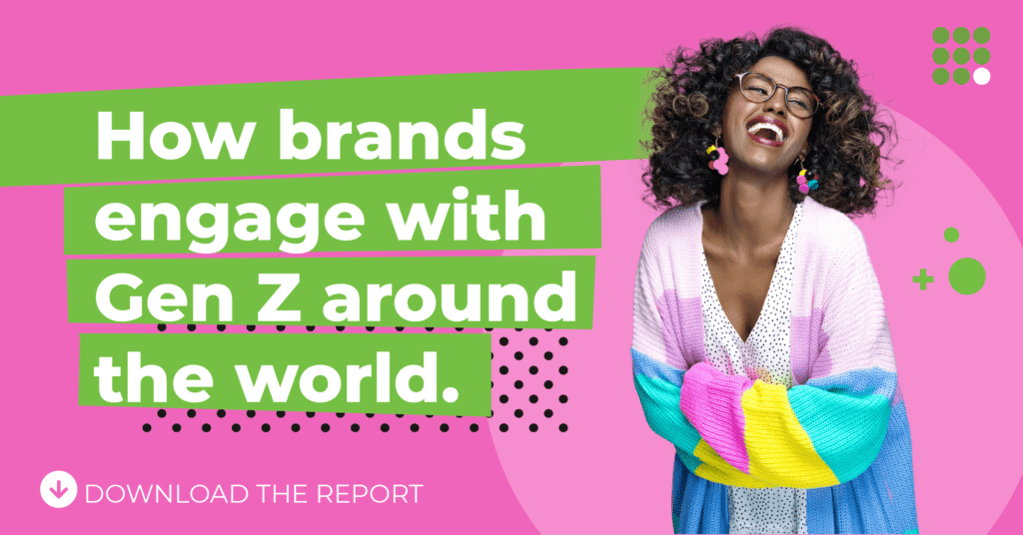Most brands serve consumers across a diverse range of ages, incomes, cultures, and life experiences. Yet much market research still relies on narrow, homogeneous samples that fail to reflect that reality.
Inclusive market research addresses this gap by ensuring research design, recruitment, and execution reflect the full diversity of the market being studied. When research lacks inclusion, insights skew toward a limited segment, increasing the risk of blind spots, misinterpretation, and flawed decision-making.
Many organizations recognize the need for diversity in market research but struggle to operationalize it. Even when diverse participants are recruited, research environments often unintentionally favor certain groups, undermining participation and distorting outcomes.
Designing inclusive market research requires more than representation alone. It requires intentional choices at every stage of the research process, from sampling and language to moderation and analysis, to ensure all voices are heard and weighted appropriately.
What is the difference between diversity and inclusion in market research?
In market research, diversity refers to including participants from a wide range of demographic, social, and cultural backgrounds. Inclusion, however, determines whether those diverse participants can meaningfully contribute within the research process.
Inclusive market research brings these concepts together by embedding diversity and inclusion into study design, recruitment, moderation, and analysis — not treating them as stand-alone considerations.
As diversity and inclusion expert Verna Myers puts it, "Diversity is being invited to a party; inclusion is being asked to dance."
Diversity brings people from diverse backgrounds and abilities together, and inclusion ensures you value and include everyone's contributions in your market research.
Why is it important to have diversity and inclusion in market research?
When you have diversity and inclusion in your market research, everyone's voice is heard. It enables brands to communicate effectively with their target audience, regardless of who they are or where they live. Without inclusive research practices, brands risk misreading demand, misjudging accessibility needs, and overlooking high-growth or underserved segments.
It is essential to have diversity and inclusion in your market research efforts more than ever before. Consumers expect to see diversity and inclusion from brands in an authentic way. This is even more true of younger consumers. According to a Deloitte survey of 11,500 global consumers, "the youngest respondents (from 18 to 25 years old) took greater notice of inclusive advertising when making purchase decisions."
As our world becomes flatter and more diverse, brands must reflect the diversity authentically in their messaging if they expect to connect with a broader audience.

Most Research is Too Narrow
The best research brings diverse perspectives together. Diversity enables you to notice things, glean insights that might have been missed with a less inclusive approach, and access richer and more valuable data. It provides a comprehensive and accurate understanding of your target market, enabling you to see the whole picture instead of a narrow and limited view. A more comprehensive range of diverse perspectives also leads to improved research outcomes.
One of the most persistent barriers to inclusive market research is over-reliance on a narrow pool of respondents. Around the world, 80 percent of research participants fall into the same rough category. We can define this with the acronym 'WEIRD' — white, educated people from industrialized, affluent, democratic societies. You can probably predict the issue with this — despite making up four-fifths of all research subjects, these people are a minority in the world, less than 15 percent. Inclusive market research directly addresses this imbalance by expanding who participates, how insights are gathered, and whose perspectives shape outcomes.
Focusing on expanding your research to include a broader range of people will improve your results while giving you an edge over competitors who focus primarily on the same groups.
How Inclusive Market Research Improves Credibility and Trust
People can see the methodology you used during your research, and they're likely to question the reliability of a study that focuses too heavily on certain groups. On the other hand, if you can show that your research included a diverse range of people, your conclusions will be more accurate and trustworthy.
Inclusive research listens to everyone and allows you to tailor your products, marketing, and business strategies to improve things for everyone. If you fail to take all voices into account in your research, you risk creating friction and being perceived as ignoring specific segments of your market.
If your research is inclusive, this will reflect positively on your brand — everything from your marketing messaging to the products you sell. In a UK survey, 51 percent of BAME people said brands do not represent their cultures well in their marketing, and 64 percent said they would feel more favourably about a brand that makes an effort to include ethnic cultures. When research reflects the realities of diverse consumers, credibility extends beyond methodology; it influences how brands are perceived in the market.
In other words, taking steps to include a diverse range of demographics in your research will pave the way for building a brand that makes more diverse people feel included.
Inclusive Market Research Methods and Techniques
Inclusive market research relies on adapting research methods to reflect diverse participant needs, contexts, and behaviors. This involves selecting methodologies that reduce participation barriers and allow for varied forms of expression across cultures and demographics.
Common techniques used in inclusive market research include:
-
Flexible qualitative methods, such as mixed-format focus groups or in-context interviews, which accommodate different communication styles.
-
Adaptive sampling approaches that go beyond traditional panels to reach underrepresented or harder-to-access populations.
-
Culturally informed moderation and analysis, which account for linguistic nuance, social norms, and response patterns during interpretation.
How to be inclusive and promote diversity in your market research
Inclusion in market research is achieved through deliberate design choices, not intent alone. Each stage of the research process — recruitment, scheduling, language, moderation, and analysis — can either widen or narrow participation. Inclusive market research requires anticipating and addressing these barriers systematically.
Here are nine best practices to promote diversity and inclusion in your market search:
How do you currently get in touch with potential research participants? Many companies fall short because they rely on the same methods — the same social media pages, established networks of people, local universities, and other such channels.
The result is often a somewhat restrictive pool of people from relatively similar backgrounds and demographics. It would be helpful to have a more diverse strategy for recruiting participants for diverse research.
It would be beneficial to expand your network by recruiting participants from diverse neighbourhoods, schools, and online platforms.
Even when businesses serve a diverse pool of individuals and are aware of this, they often still focus their research on just one or two groups erroneously. Brands need to know their audience and who is in it — and based on this information, build several buyer personas to cover all the demographics in their market.
When you have a clear understanding of whom you're targeting, you'll be able to construct a more inclusive research strategy tailored to multiple groups and gather a richer range of information and insights.
It's easy to inadvertently design a research process that prioritizes certain groups over others. Maybe your focus groups take place in an area only reachable by car. Perhaps you conduct questionnaires over Zoom, excluding people with poor internet access. Or perhaps you host interviews in the evening, making it impossible for people who work late shifts.
All these factors can hinder the effectiveness of your research by excluding certain groups and leading to skewed demographics that don't accurately represent your market. Here's what you should do instead:
Depending on the type of research you're carrying out, you may need to spend time working with people from vulnerable groups. This could include those with severe mental health issues, victims of serious crimes or abuse, prisoners, or older people.
Gaining feedback from these groups can be extremely valuable, providing insights into how the individuals within them perceive your brand. It can allow you to develop new products and services that cater to vulnerable groups and create a more accessible and more enjoyable experience for them.
However, this kind of research can present challenges for researchers. For example, people from vulnerable groups may not feel comfortable sharing their thoughts and feelings in a research setting — especially when the questions touch on sensitive topics. Extra care should be taken to ensure your research methods do not cause any distress or discomfort to your participants. Here are some things to consider:
Your surveys, interviews, introductions, guidance, and all other forms of communication should be easy to understand for people from every background. The most obvious example here is differences in language. If a large part of your market speaks a language other than English, you'll need translators to ensure they (and you) understand everything. Here are some examples:
Different cultural groups respond differently to research. For example, in Japan, focus group participants are typically less willing to go against the group's consensus, making this research method tricky when weighing individual opinions.
Cultural differences can impact almost every element of your research process. For instance, a time that one culture might consider ideal for attending a research event could be highly inconvenient for another.
Take some time to make yourself aware of these cultural differences and how they relate to your research. That way, you can design research methods that are more appealing and welcoming to different cultures, which yields more accurate and valuable results.
People from minority groups will often feel more comfortable sharing their thoughts and opinions with someone from a similar background. Additionally, moderators from diverse backgrounds may find it easier to connect with these participants and elicit more helpful responses.
Working with a more diverse team of researchers enables you to draw on different experiences and build a more inclusive research process. When groups are too homogenous, it's easy to fall into assumptions and miss out on certain blind spots, which results in a process that can exclude specific demographics and lead to incomplete results.
It's common for researchers to make unconscious assumptions when asking questions and creating hypothetical scenarios in research. For example, a survey question might assume that the participant is from a typical nuclear family, alienating people who don't fall into that lifestyle category. Take some time to consider whether your questions are relatable to a wide range of people, rather than just the dominant culture or lifestyle of your location.

Common Mistakes in Inclusive Market Research
Even well-intentioned research can fall short of inclusion. Common pitfalls include recruiting diverse participants without adapting moderation approaches, translating surveys without considering cultural context, or applying research norms from one market to another. Inclusive market research requires consistency across recruitment, execution, and interpretation, not isolated adjustments.
Work with an experienced market research agency.
At Kadence, we work with organizations across global markets to design inclusive research that reflects real audiences, cultural nuance, and local context. Our teams support inclusive research at every stage, from recruitment and moderation to analysis and interpretation.




